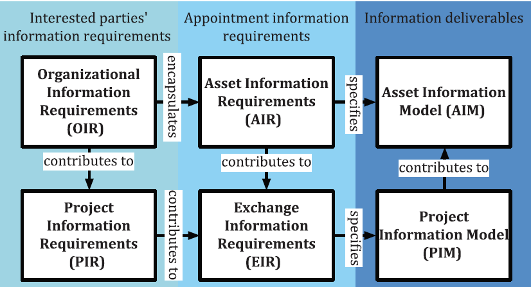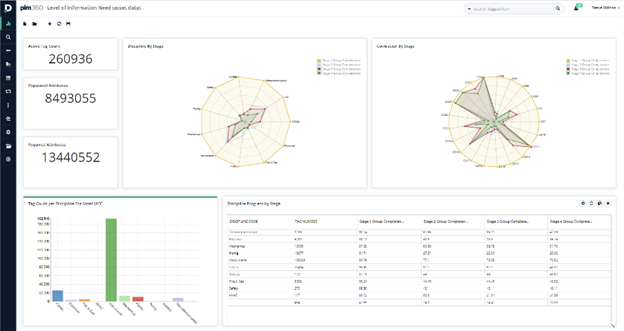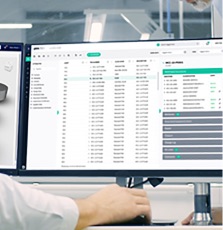



By Peter Waywell, Industry Consultant - Datum360
I recently explored the importance of owners understanding the core principles of data and how establishing data standards drives insight into better decision-making. Knowing what you need, why you need it, and how you need it are the first steps in successful digital delivery to manage and drive operational efficiencies effectively.
But what happens once you’ve set and defined the data requirements? While getting ownership of your data is only half of the equation. The other half is aligning a clear information management (IM) strategy to industry standards to drive value from day one. Regardless of the industry sector, this is where having complete, correct, consistent, and connected data comes into effect to eliminate any headaches and allows owners to track, maintain, and operate facilities with ease.
Industry standards and specifications play a crucial role in helping to articulate information and data requirements across the asset lifecycle. While data requirements can be defined without adopting any of these industry standards or specifications, doing so creates a common language and understanding within an organisation, across different systems and applications, through the supply chain, and cross-industry teams.
Bottom line: having a common construction language connects teams and eliminates miscommunication as everyone has visibility into each other’s needs. And having a clear IM strategy is a critical step in this journey.
Industry standards and specifications, including ISO 19650, CFIHOS, BIM4Water, Uniclass, ISO 55000, AWP, ISA, NAMUR, and DEXPI, can guide companies in defining their digital delivery strategies. But it’s about choosing the right standard for the right reason.
For instance, ISO 19650 sets out the requirements for a Common Data Environment from capital project execution through operations. This standard helps prepare and define information requirements, drive consistency in reporting across project stakeholders, determine how and when to deliver information, and ensure information accuracy before integrating with operational systems.
Typically, capital delivery will generate significant quantities of data, but not all of this data is necessarily needed for the safe and efficient operation of the asset. Understanding what data is needed to support each function is critical for execution, and then, importantly, making sure this information is available at the right time for schedule and planning.
The essence of these information and data requirements is well articulated in this diagram from ISO 19650, showing how Organisation and Asset Information Requirements (OIR/AIR) are the basis of what a project should provide in a digital delivery, i.e. the Exchange Information Requirements (EIR).

It is then important to understand how this data matures through the asset lifecycle and when it is needed to support key project or operational-centric activity. For example, project stages, such as commissioning, are too often started, but the completeness and availability of data to support the work needed is not sufficient. Parallel and duplicated efforts are then required, which increases costs and impacts the schedule. This topic is described in both ISO 19650 with the Level of Information Need and the evolving AWP standard, which defines information requirements at each project stage. Like ISO 19650, AWP helps establish a common set of data requirements and a standardised way data is transferred on projects and specified in contracts. Managing this data requirement is increasingly important but a challenge when multiple and various systems are involved.
Being able to process data, potentially from many different systems and organisations, can have a considerable overhead if this data is being provided in many and varied formats and structures. Each variety needs to be handled, and that comes with a cost. Being transparent and precise about how this information is provided has implications on how it can be readily and efficiently utilised.
The collaboration between Datum360 and Autodesk addresses this challenge directly by providing a data-driven design, collaboration, and digital delivery environment, underpinned and aligned with the most appropriate industry standard or specification. In addition, multiple data formats and document formats can be ingested and brought together for checking against the information requirements as previously highlighted concerning ISO 19650 and AWP.
Having defined what data is needed, where it is coming from, and how it is provided, the next step is having a process in place to measure it. Measuring progress against a variety of criteria is important for planning and managing a complex and integrated schedule of capital project delivery. It is also a key element in building trust in the data.

There are many interconnected activities across capital planning and execution that are dependent upon subsets of data. Being able to produce accurate assessments of data completeness, metrics that demonstrate alignment, and compliance with requirements within the context of need and schedule, will give visibility when planning and executing these activities.
Supplier performance is a good example. By being specific about what a supplier is responsible for providing, you can monitor the status and progress.
This is critical, for instance in cases where this data is needed to support such activities as commissioning and start-up. In addition, assessing the quality and completeness of this data in real-time means that issues can be captured and rectified earlier, allowing for remedial actions to be put in place.
Whether we refer to levels of information needed, gateways, stage gates, milestones, being able to visualise and report on the status and progress according to explicit information requirements is necessary for project success.
Regardless of the industry sector, when it comes to successful digital delivery, there are clear principles that, if adopted, can deliver significant benefit to project execution and operations. These principles are:
The collaboration between Datum360 and Autodesk Construction Solutions directly addresses these principles. Through a combination of our solutions, we deliver a common and connected data and document environment that supports specifications and delivers a single-source environment for accessing, creating, and managing the critical data and deliverables during the full project, handover, and operations lifecycle.
Learn more about how our tools can work together to connect data in a common data environment to address challenges and provide value for both capital project delivery and operations.
This article first appeared on the Autodesk Digital Builder Blog on 21st June 2021



The Datum360 platform provides effortless delivery of your Engineering Information and Asset Data.